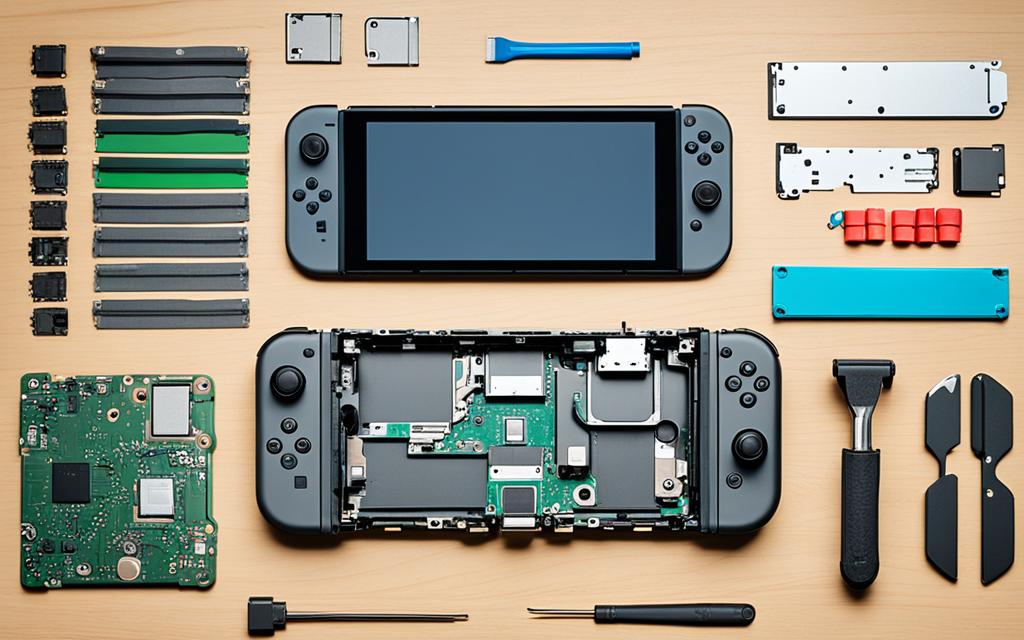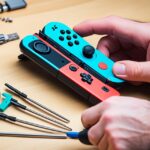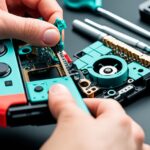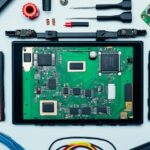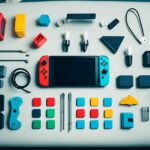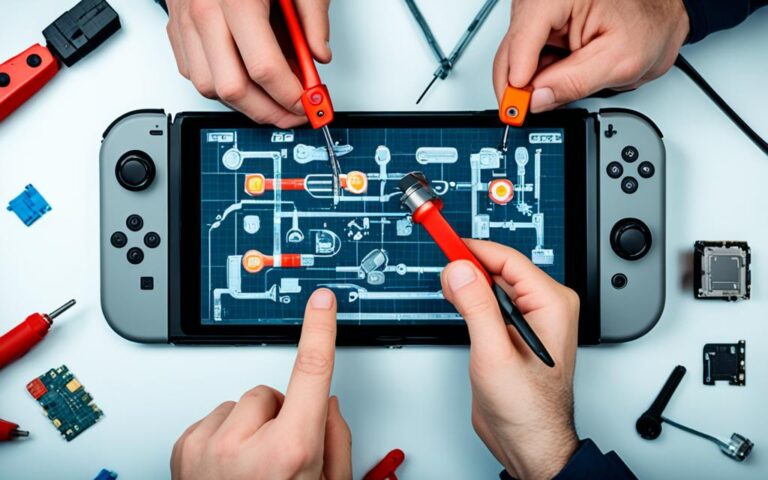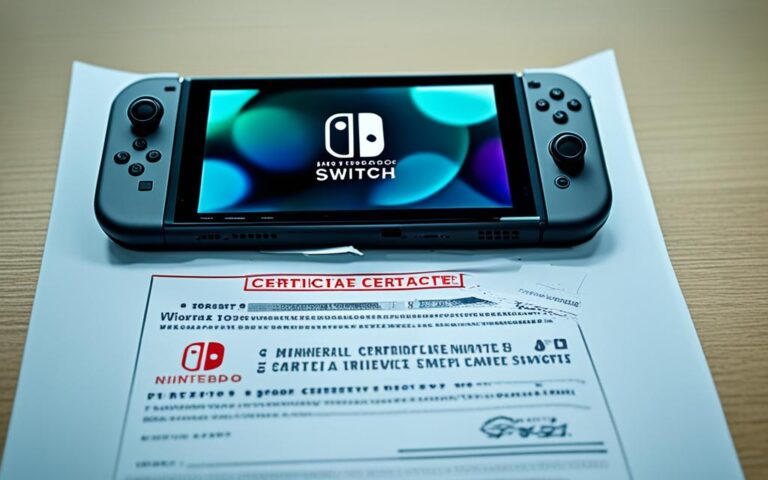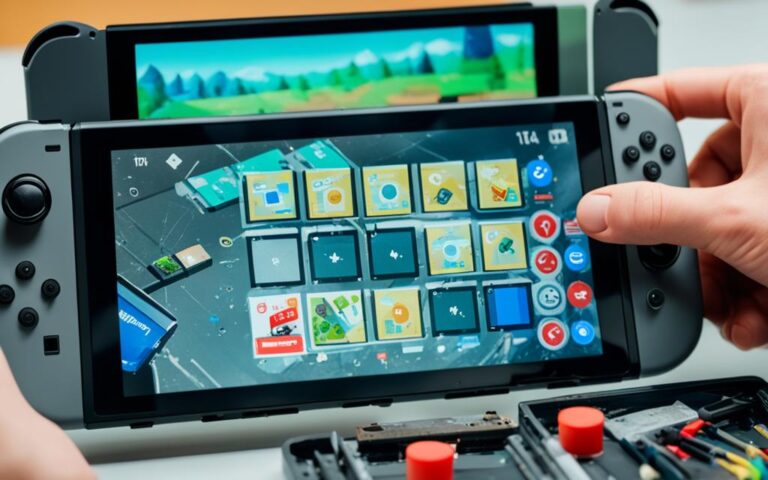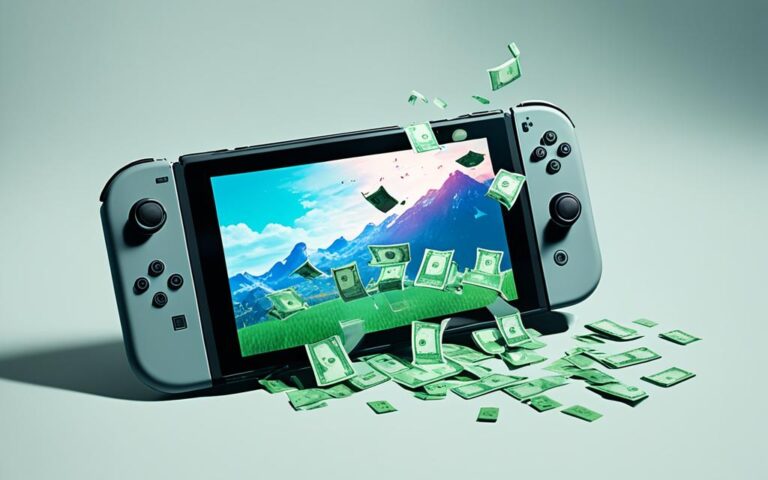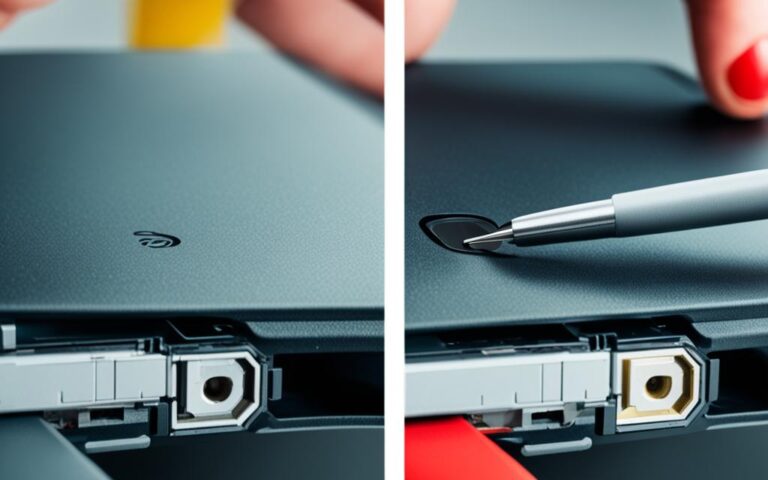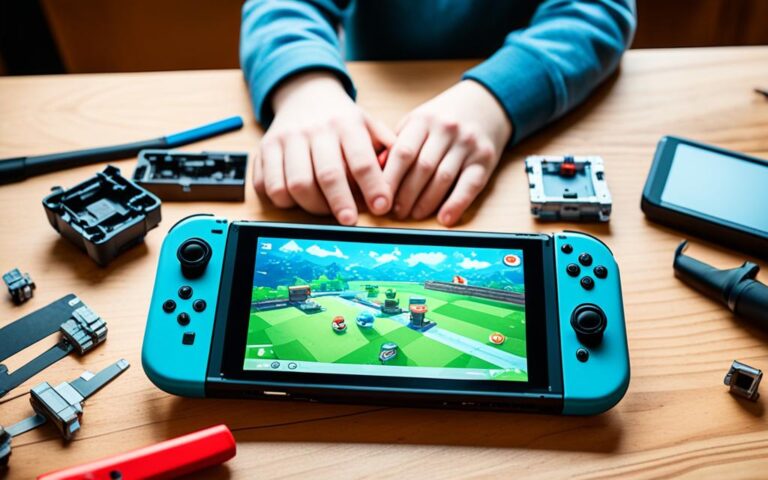Learning from Nintendo Switch Repair Failures: A Guide to Success
The Nintendo Switch is a popular gaming system, but like any tech, it can encounter glitches and problems. This article serves as a guide to learning from common repair failures and finding success in repairing the Nintendo Switch. Whether it’s issues with battery life, storage, connectivity, or hardware problems like Joy-Con drift and screen damage, we’ll provide expert tips and solutions to help users troubleshoot and fix their Nintendo Switch consoles.
Repairing the Nintendo Switch can be a daunting task, especially for those without technical knowledge. However, with the right guidance and solutions, even beginners can overcome common repair failures and achieve success in fixing their consoles.
In this comprehensive guide, we will address a range of issues that Nintendo Switch users commonly encounter. From battery problems to connectivity issues, we’ll walk you through troubleshooting steps and provide detailed instructions on how to resolve them.
By following our advice, you can save time, money, and frustration by avoiding unnecessary repairs or replacements. Whether you’re a casual gamer or a dedicated enthusiast, this guide will equip you with the knowledge and skills needed to keep your Nintendo Switch in optimal condition.
So, let’s dive in and learn from Nintendo Switch repair failures. Together, we’ll pave the way to a successful repair experience and ensure a seamless gaming experience for all.
Common Battery Issues and Solutions
One common issue that Nintendo Switch users encounter is battery drain, where the device’s battery depletes faster than normal. Several factors could contribute to this problem, including a faulty charger or port, outdated software, hardware damage, or a worn-out battery. To rectify the issue and extend the battery life of your Nintendo Switch, consider the following solutions:
- Swap out the charger: Start by replacing the charger and cable you are using to charge your Nintendo Switch. A faulty or incompatible charger can lead to inefficient charging and rapid battery drain.
- Update the software: Make sure your Nintendo Switch’s software is up to date. Outdated software may contain bugs that could impact the device’s battery performance. Connect your Switch to a stable internet connection and check for system updates.
- Check for hardware damage: Inspect the charging port and cable for any visible damage. A damaged port or cable can hinder the charging process and result in battery drain. If you notice any issues, consider seeking professional repair or replacement.
- Replace the battery: If all else fails, the battery itself may be worn-out and no longer capable of holding a charge efficiently. Replacing the battery with a new one can restore your Switch’s battery life to its full potential.
By implementing these solutions, you can address common battery issues in the Nintendo Switch and enjoy longer play sessions without the frustration of constant battery drain.
| Common Causes of Battery Drain | Solutions |
|---|---|
| A bad charger or port | Swap out the charger for a new and compatible one |
| Outdated software | Update the Nintendo Switch’s software to the latest version |
| Hardware damage | Check for visible damage in the charging port and cable and seek professional repair if necessary |
| Worn-out battery | Replace the battery with a new one |
Storage Problems and Solutions
Another common problem users face with the Nintendo Switch is limited storage space. The standard Switch comes with 32GB of storage, which can fill up quickly, especially considering the space used by the console’s operating system. To overcome this, it is important to understand the benefits of using a microSD card to expand storage.
A microSD card is a small, portable storage device that can be easily inserted into the Nintendo Switch. It allows users to store and access more games, save data, and software updates. By utilizing a microSD card, users can significantly increase the available storage capacity and enjoy a wider variety of gaming experiences without constantly worrying about running out of space.
When choosing a microSD card for your Nintendo Switch, it is important to consider compatibility and performance. Look for cards that are specifically labeled as compatible with the Nintendo Switch and have a high read and write speed to ensure smooth gameplay and fast loading times. It is recommended to opt for a microSD card with a minimum capacity of 64GB to cater to the growing size of modern games.
Managing and organizing game downloads is also crucial in optimizing storage space. To avoid getting stuck in a cycle of download, play, and delete, it is recommended to prioritize games and applications that you frequently play or want to keep installed. You can periodically archive or uninstall games that you no longer play to free up space for new titles.
Tips for Managing Storage on Nintendo Switch:
- Regularly archive or uninstall games you no longer play to free up storage space.
- Organize your games by creating folders based on genres, favorites, or currently playing titles.
- Consider purchasing a microSD card with higher storage capacity to accommodate future game downloads.
- Ensure that you safely eject the microSD card from the Nintendo Switch before removing it to prevent data loss or corruption.
By effectively managing storage and utilizing a microSD card, Nintendo Switch users can overcome the limitations of the console’s default storage capacity and enjoy a vast library of games without compromise.
**Table**: Comparison of microSD card options for Nintendo Switch storage expansion
| MicroSD Card | Capacity | Read Speed | Write Speed | Price |
|————–|———-|————|————-|——-|
|SanDisk Ultra | 64GB | 100 MB/s | 90 MB/s | £XX.XX |
|Samsung EVO | 128GB | 100 MB/s | 90 MB/s | £XX.XX |
|Kingston Canvas Select Plus| 256GB | 100 MB/s | 85 MB/s | £XX.XX |
|Lexar Professional | 512GB | 100 MB/s | 90 MB/s | £XX.XX |
Joy-Con Drift: Causes and Fixes
Joy-Con drift is a well-known issue with the Nintendo Switch, where the analog sticks register movements without player input. This can be incredibly frustrating for gamers, affecting gameplay and overall user experience. In this section, we will explore the common causes of Joy-Con drift and provide step-by-step instructions on how to address this problem.
The Causes of Joy-Con Drift
Joy-Con drift can occur due to various reasons, but two common causes deserve attention: dust and wear on the joystick slider contact points. Over time, dust particles can accumulate around the joystick mechanism, causing interference and inaccurate readings. Additionally, wear and tear on the contact points can lead to a loss of connectivity and erratic joystick movements. These issues can significantly impact gameplay and make the Nintendo Switch experience less enjoyable.
Calibrating the Joy-Con Controllers
To address Joy-Con drift, one of the first troubleshooting steps is to calibrate the Joy-Con controllers. This process allows the system to recalibrate the center position of the analog sticks and can often correct minor drift issues. Here’s how to calibrate the Joy-Con controllers:
- Go to the “System Settings” on your Nintendo Switch.
- Select “Controllers and Sensors.”
- Choose “Calibrate Control Sticks.”
- Follow the on-screen instructions to complete the calibration process.
Note that calibration may not solve all cases of Joy-Con drift, particularly if the issue is related to dust or wear on the joystick mechanism.
Cleaning the Analog Stick
If Joy-Con drift persists after calibration, cleaning around the base of the analog stick may help. Dust and debris can accumulate around the joystick, causing interference with the sensor and resulting in drift. Here’s how to clean the analog stick:
- Power off your Nintendo Switch.
- Turn the Joy-Con controller upside down to expose the analog stick.
- Gently insert a clean, dry toothbrush around the base of the analog stick.
- Rotate the toothbrush in a circular motion to dislodge any debris.
- Use a can of compressed air to blow away any loosened particles.
- Power on your Nintendo Switch and check if the Joy-Con drift has improved.
Additional Solutions and Third-Party Options
If the above methods do not resolve the Joy-Con drift issue, there are a few other solutions you can explore. First, you can contact Nintendo Support for repairs or replacements. They may be able to fix the problem under warranty or offer a replacement Joy-Con controller. Alternatively, you can consider seeking assistance from third-party repair specialists who specialize in Nintendo Switch repairs. While this may come at an additional cost, it can be a viable option for individuals whose warranty has expired or prefer a faster turnaround time.
By understanding the causes of Joy-Con drift and utilizing the appropriate fixes, Nintendo Switch users can regain full control and enhance their gaming experience. The table below summarizes the causes and fixes of Joy-Con drift for easy reference:
| Causes of Joy-Con Drift | Fixes for Joy-Con Drift |
|---|---|
| Dust accumulation around the joystick mechanism | Calibrate the Joy-Con controllers |
| Wear and tear on the joystick slider contact points | Clean around the base of the analog stick |
| More severe drift issues | Contact Nintendo Support for repairs or replacements |
| Alternative repair options | Seek assistance from third-party repair specialists |
Connectivity Issues: Wi-Fi and Docking Problems
One of the frustrating challenges that Nintendo Switch users may encounter is connectivity issues, including problems with Wi-Fi connection and docking. These issues can disrupt the seamless gaming experience that players expect.
To help users resolve these connectivity problems, we’ve compiled a list of troubleshooting tips that can help diagnose and fix the issues:
- Restart the device: Sometimes a simple restart can resolve temporary connectivity issues.
- Check for obstructions and interference: Make sure there are no physical obstructions blocking the Wi-Fi signal or interfering with the docking process.
- Test different HDMI ports on the TV: If you’re experiencing problems with the dock, try connecting it to different HDMI ports on your TV to rule out any potential issues with a specific port.
If you’re specifically facing Wi-Fi connection issues, consider the following additional steps:
- Check the Wi-Fi signal strength: Ensure that you’re within range of your Wi-Fi router and that the signal strength is strong enough for a stable connection.
- Restart the router: Restarting your Wi-Fi router can help resolve any temporary issues it may be experiencing.
- Contact your internet service provider (ISP): If the Wi-Fi connection problems persist, it’s worth reaching out to your ISP to check for any service outages or issues on their end.
If you’re still experiencing problems after trying these troubleshooting tips, it may be worth reaching out to Nintendo Support for further assistance or considering repair or replacement options for the Wi-Fi connectivity or dock.
To visually demonstrate the steps for troubleshooting Wi-Fi and docking problems, refer to the table below:
| Troubleshooting Steps | Wi-Fi Connection Issues | Docking Problems |
|---|---|---|
| 1. Restart the device | ✔️ | ✔️ |
| 2. Check for obstructions and interference | ✔️ | ✔️ |
| 3. Test different HDMI ports on the TV | N/A | ✔️ |
| 4. Check Wi-Fi signal strength | ✔️ | N/A |
| 5. Restart the router | ✔️ | N/A |
| 6. Contact ISP | ✔️ | N/A |
By following these troubleshooting steps, users can address common connectivity issues, ensuring a smooth gaming experience with their Nintendo Switch consoles.
Screen Repair: Scratches and Dead Pixels
Screen damage, such as scratches and dead pixels, can be frustrating for Nintendo Switch users. Not only do these issues affect the visual quality of games and content, but they can also hinder the overall gaming experience. To help users address and resolve screen-related problems, we’ve outlined the best course of action below.
Screen Protectors: Shielding Your Nintendo Switch
Prevention is always better than cure, and this principle applies to screen damage as well. Investing in a high-quality screen protector for your Nintendo Switch can provide a protective barrier against scratches, smudges, and even minor impacts. By applying a screen protector, you can safeguard your device’s screen and maintain its pristine condition for longer.
Contacting Nintendo Support: Expert Assistance
If your Nintendo Switch’s screen has suffered substantial damage or is displaying dead pixels, it may be necessary to seek professional assistance. Contacting Nintendo Support is the recommended approach to address these issues. They have the expertise and resources to guide you through the necessary steps for screen repair or replacement. Get in touch with their support team to initiate the process.
Seeking Help from Nintendo Experts
In some cases, it might be beneficial to consult with independent Nintendo experts or authorized repair centers. These professionals have in-depth knowledge of Nintendo consoles and can offer specialized services to fix screen-related problems. They can assess the damage, provide an accurate diagnosis, and execute the most appropriate repair solutions to restore your Nintendo Switch’s screen to optimal condition.
“Protecting your Nintendo Switch’s screen is essential for an uninterrupted gaming experience. By implementing preventive measures, such as using a screen protector, and seeking professional assistance when needed, players can extend the lifespan of their devices and enhance their gaming pleasure.” – Nintendo Screen Repair Expert
By following these recommendations, Nintendo Switch users can effectively address screen scratches and dead pixels. Remember that prevention is key, so protect your screen with a screen protector from day one, and if necessary, reach out to Nintendo Support or experienced repair professionals for their expertise. By taking prompt and appropriate action, you can restore your Nintendo Switch’s screen to its optimal condition and enjoy an immersive gaming experience once again.
Firmware Updates and Game Cartridge Errors
Keeping the Nintendo Switch’s firmware up to date is crucial for optimal performance. Regular system updates enhance features, improve stability, and ensure compatibility with the latest games. However, users may encounter common issues when updating the firmware.
Firmware Update Errors:
When updating the Nintendo Switch’s firmware, users may face challenges due to unstable internet connections or failed updates. These errors can disrupt the installation process and potentially cause system malfunction. To overcome these obstacles, users can follow these troubleshooting steps:
- Ensure a stable internet connection, preferably with a wired connection or a reliable Wi-Fi signal.
- If a firmware update fails, restart the console and try the update again.
- If the problem persists, reset the Nintendo Switch’s network settings and attempt the update once more.
- Contact Nintendo Support for further assistance if the issue persists.
By following these steps, users can troubleshoot and resolve common firmware update errors, ensuring their Nintendo Switch remains up to date and maintains optimal performance.
Game Cartridge Errors:
In addition to firmware updates, addressing game cartridge errors is essential for a seamless gaming experience. Sometimes, users may encounter issues where the console fails to read or recognize game cartridges. Should this occur, follow these steps to rectify the problem:
- Remove the game cartridge from the Nintendo Switch’s cartridge slot.
- Inspect the cartridge for any visible debris, such as dust or dirt particles.
- Gently clean the cartridge with a soft, lint-free cloth, wiping from the center outward.
- Reinsert the game cartridge firmly into the console’s cartridge slot until it clicks into place.
If the issue persists, try inserting a different game cartridge to determine if it’s a specific cartridge error or a console-related issue. Should the problem continue, contacting Nintendo Support is recommended for further assistance and potential repairs.
In summary, staying informed about Nintendo Switch firmware updates and addressing game cartridge errors are essential for an optimal gaming experience. Regular system updates ensure improved performance and compatibility, while troubleshooting game cartridge errors ensures seamless gameplay without interruptions.
Conclusion
In conclusion, the journey to successfully repairing your Nintendo Switch starts with learning from common repair failures. By following the expert tips and troubleshooting solutions provided in this guide, users can enhance their skills and overcome issues related to battery life, storage, connectivity, Joy-Con drift, screen damage, firmware updates, and game cartridge errors. The key to a seamless gaming experience lies in staying informed, seeking assistance when needed, and taking proactive steps to maintain and repair your Nintendo Switch.
Remember, when faced with battery drain or limited storage space, try swapping out the charger, updating the software, checking for hardware damage, or expanding storage with a compatible microSD card. If you encounter Joy-Con drift, consider calibrating the controllers, cleaning around the analog stick base, contacting Nintendo Support, or exploring third-party repair options.
When experiencing connectivity issues, such as Wi-Fi connection problems or docking malfunctions, try restarting the device, removing any obstructions and interference, and testing different HDMI ports on your TV. For screen repair, protect your Nintendo Switch with screen protectors, reach out to Nintendo Support for screen repairs, or consult a Nintendo expert for assistance. And always stay informed about firmware updates and ensure your game cartridges are clean and properly inserted to avoid errors.
By following this comprehensive Nintendo Switch repair guide and employing the troubleshooting solutions provided, users can overcome common issues and achieve success in repairing their consoles. Remember, knowledge is power, so equip yourself with the necessary skills and resources to maintain and repair your Nintendo Switch for a seamless gaming experience.
